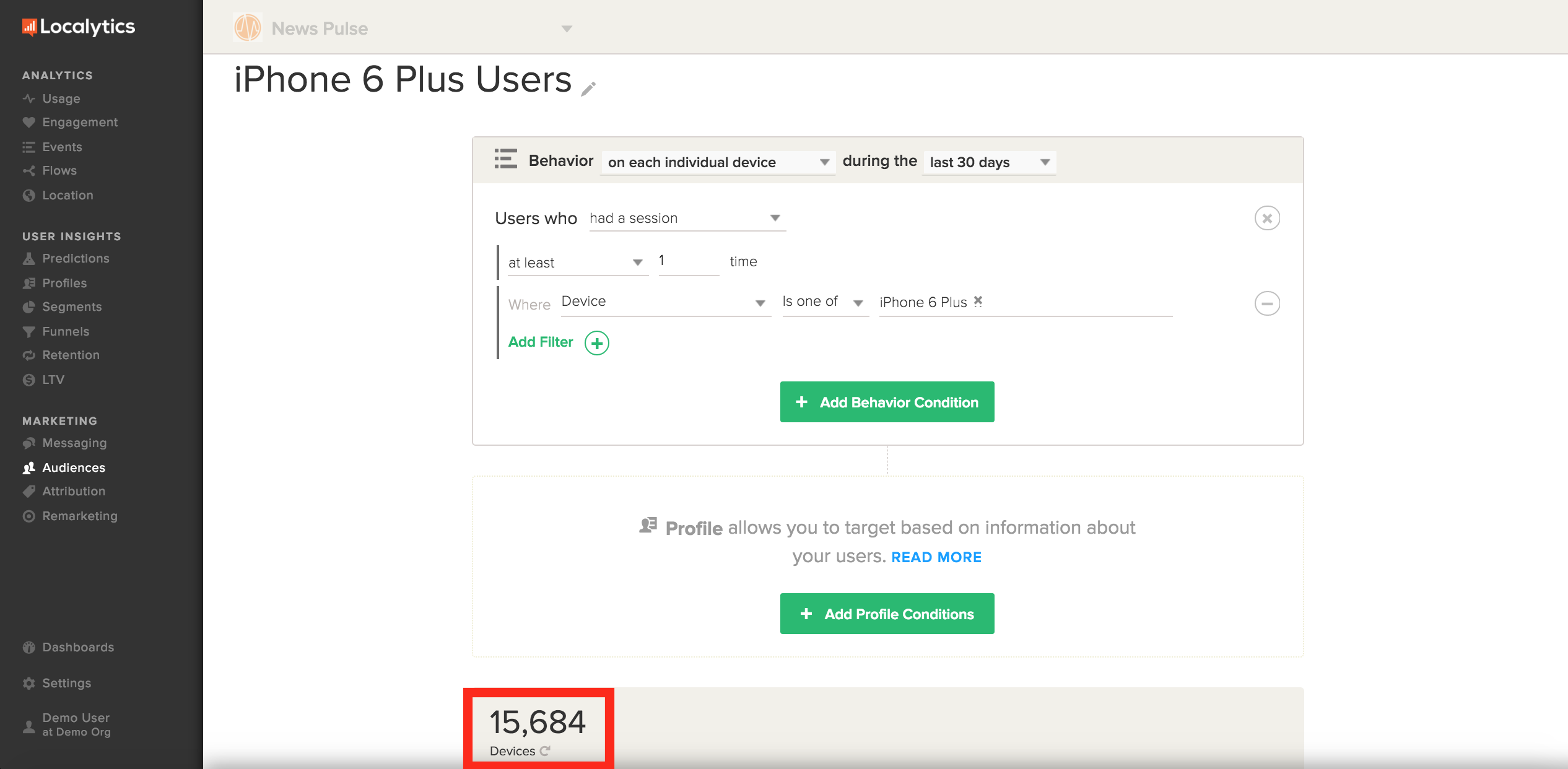Why is the estimated audience size different than the number of messages sent?

There are several reasons why this audience count might differ from the number of sends for the campaign:
- The qualifying audience is usually greater than the addressable audience
- Even some members in the addressable audience will not receive messages for technically valid reasons
- This is a preliminary estimate optimized for speed, which can be subject to estimation error.
The qualifying audience is usually greater than the addressable audience
In Localytics, audiences can be used to power many different kinds of campaigns. Push messaging, in-app, or email campaigns each have different technical requirements. We compute the size of the qualifying audience, which means we don’t automatically remove people excluded from these disparate channels. There are limitations for each channel that cause the addressable audience to be less than the qualifying audience. Here’s how we define addressable audiences in Localytics:
Push campaigns
- Users must have push enabled for your app. The default audience calculation includes all users regardless of whether they have push messaging enabled or disabled. To determine the addressable audience for a push messaging campaign, you must exclude users with push disabled.
- Users must have a version of the app that has Localytics push messaging properly configured.
In-app messaging campaigns
- Users must have a session (be using your app) while the campaign is active. The default audience calculation includes all users that could receive a message if they have a session while the campaign is live. In other words, the addressable audience for an in-app message can only be known after it goes live.
Campaigns with control groups
- Some users may be in the qualifying audience but are deliberately excluded from the addressable audience if you have used the Control Group feature.
Campaigns sent to users with profile data
- If you have uploaded profiles data via CSV or API, you may have uploaded data that is “device-less,” meaning we cannot connect this information to device-level data collected by our SDK. If true, the qualifying audience may include users that are not addressable for an in-app or push campaign since we can’t tie those users to a device (even though they may be addressable via another channel, like email).
Even some members in the addressable audience will not receive messages for technically valid reasons
Localytics provides this calculation as a preliminary estimate. The word preliminary is important because there are several reasons for which a user may properly not receive a message even if that user is in the addressable audience, for example:
- The calculation includes users that would otherwise qualify and be in the addressable audience but cannot receive messages because they have since uninstalled the app. (This can especially impact campaigns targeting users on old versions of the app).
- Some users will qualify and be in the addressable audience, but will be unable to receive the message because they are not online or have poor network conditions when the message is sent for delivery. (Additionally, for in-app messages, users must have a connection that can support the transmission of the in-app creative, which depends both on network connection speed and creative size.)
- The calculation does not exclude any technical failures that occur downstream from Localytics, for example, if Apple or Google fails to deliver a message to the device.
This is a preliminary estimate optimized for speed, which can be subject to estimation error
In addition, the word estimate is important. Final segmentation for messaging can take several minutes, so we give a rough calculation here optimized for speed. The final segmentation used to power marketing campaigns filters at send-time for deliverability of specific channels, and filters out anonymous deviceless users. These estimates are cached and also sampled for large customers.
This can explain why when you target a very specific audience, such as exactly one email address, the estimated audience count shows 0 estimated users.
Summary
The end result is that the preliminary audience estimates are usually greater than the observed number of sends. Ultimately, the reported send count is the most accurate measure, both because that value is computed after executing the full audience query at send-time (not a preliminary estimate) and because it filters out all channel-specific exclusions (for example, push disabled for push campaigns) as well as valid downstream technical exclusions (for example, app uninstalls).